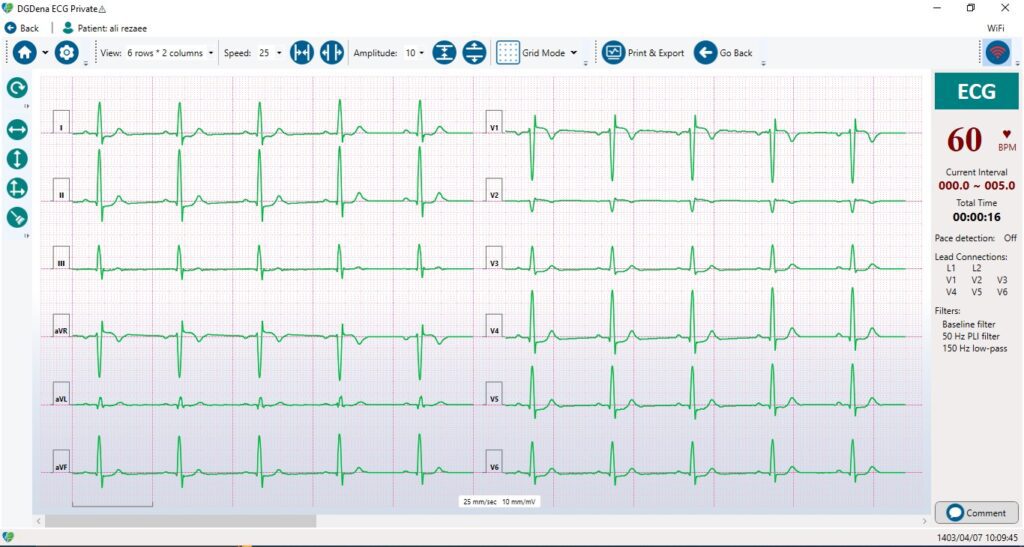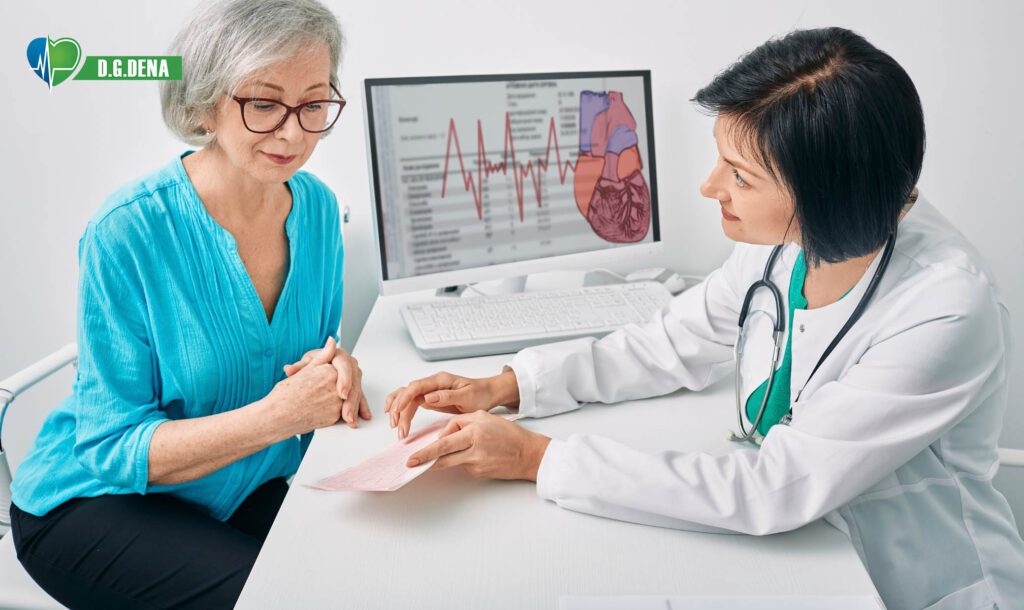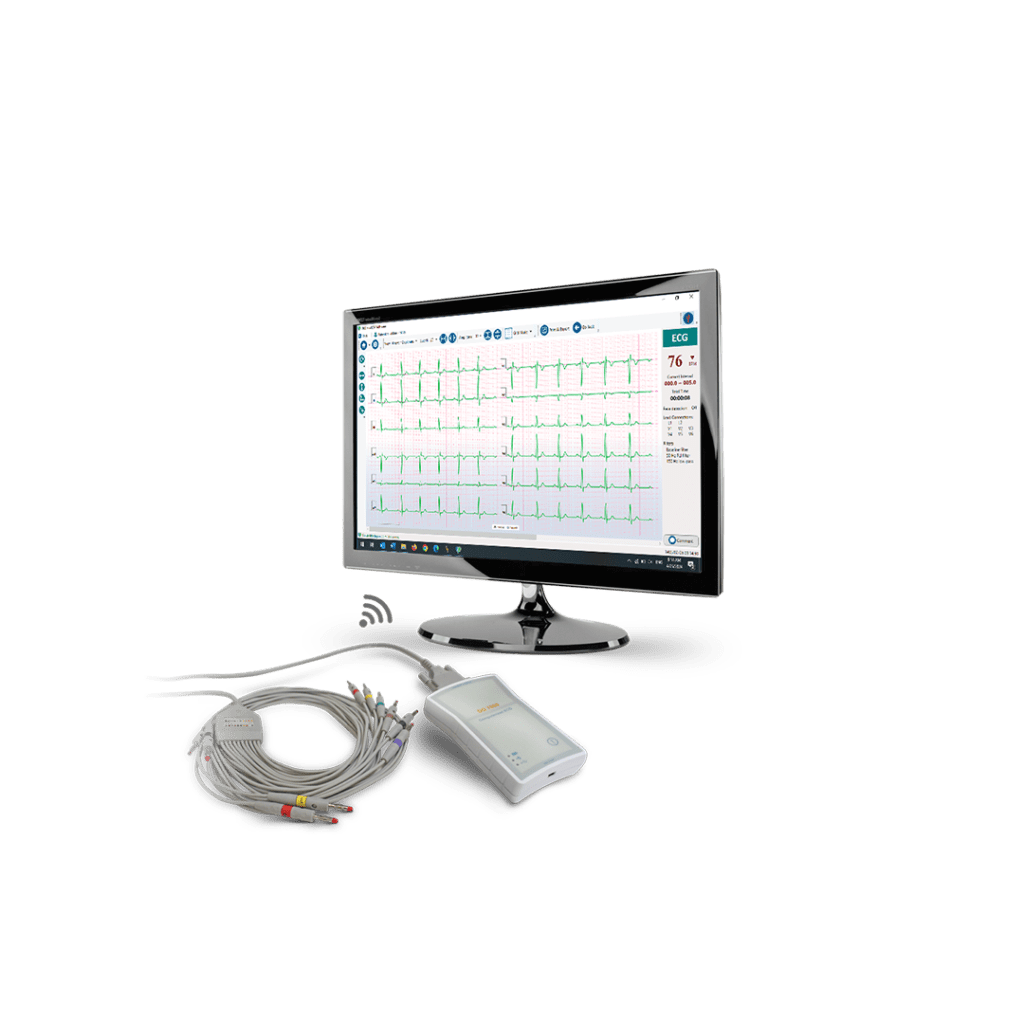Electrocardiograms (ECG or EKG) are indispensable tools used to monitor and diagnose heart conditions in modern medicine. Whether you’re a patient, a medical student, or simply curious about how these tests work, this guide will provide you with everything you need to know about ECG.
What is an Electrocardiogram Test?
An ECG test, or electrocardiogram, is a non-invasive procedure that measures the heart’s electrical activity over time. This test provides crucial information about the heart’s rhythm, rate, and electrical conduction pathways, helping diagnose various cardiac conditions.
How Does an ECG Work?
The heart functions by generating electrical impulses that trigger contractions, which pump blood throughout the body. These electrical impulses create small voltage changes that can be detected on the skin’s surface. An electrocardiogram captures these changes using electrodes placed on the chest, arms, and legs, recording the heart’s electrical activity as waves on a graph.
Key Components of an Electrocardiogram
- P Wave: Represents atrial depolarization, the electrical activity associated with the contraction of the atria.
- QRS Complex: Represents ventricular depolarization, the electrical activity related to the contraction of the ventricles.
- T Wave: Represents ventricular repolarization, the process of the ventricles resetting electrically and preparing for the next contraction.
- U Wave (if present): An additional wave is sometimes seen after the T wave, possibly indicating conditions such as hyperthyroidism, hyperkalemia, or ventricular hypertrophy.

The Electrocardiogram Procedure
Preparation:
- Patient Preparation: The patient should shave any body hair that might interfere with signal transmission and remove accessories, watches, and metal objects. The patient then lies down on a special bed to prepare for the test.
- Electrode Placement: A specialist attaches chest electrodes to the patient’s chest, arms, and legs.
Recording:
- Connection to ECG Device: The chest electrodes are connected to the ECG Device using special wires.
- Data Collection: The Electrocardiogram device begins recording the heart’s electrical impulses within seconds of connection.
- Result Display: The test results are displayed on a monitor and can be printed on graph paper.
Types of ECG Tests
There are various types of electrocardiography, including:
- Resting ECG: Conducted while the patient is lying down, with electrodes attached to the body.
- Stress Test: Performed while the patient exercises on a treadmill or stationary bike to monitor the heart’s activity during exercise and rest.
- Holter Monitor: A portable device around the neck that records the heart’s activity over 24-48 hours. Another version involves wearing the device for about 30 days, recording only during symptomatic episodes.
Why is an ECG Important?
Conducting an ECG test is essential for diagnosing and even preventing the following conditions:
- Arrhythmia: Irregular heartbeats, high (abnormal) heart rate, or low (abnormal) heart rate.
- Heart Attack (Myocardial Infarction or MI): The test can easily detect potential heart attack symptoms and report previous heart attacks.
- Coronary Artery Disease (CAD): Narrowing or blockage of coronary arteries, leading to ischemia (lack of blood supply), which is visible in the test.
- Heart Failure: Symptoms are visible on an ECG.
- Structural Heart Abnormalities: Such as enlargement and other abnormalities are fully detectable.
Understanding ECG Results
Normal Results Indicating Heart Health:
- Normal heart rate between 60-100 BPM.
- Continuous P waves (followed by QRS and T waves)
Abnormal Results Indicating Heart and Vascular Problems:
- Bradycardia: Heart rate lower than 60 beats per minute.
- Tachycardia: Heart rate higher than 100 beats per minute.
- Arrhythmia: Irregular heartbeats.
- ST-Segment Changes: Can be normal, elevated, or depressed, indicating coronary artery blockage.
- Abnormal Waveforms: Any abnormal changes in the shape, size, or timing of P and QRS waves indicate heart problems.
ECG Test Side Effects
An electrocardiogram test has no significant side effects or limitations, but consider these points:
- While the test examines all heart issues, some may go undetected, requiring further testing.
- Individuals with very sensitive skin may react to the electrodes.
Advanced ECG Technology: The Dena Electrocardiograph Device
The Dena electrocardiograph device is one of the most comprehensive electrocardiogram testing devices available. The Dena model DG-7000 is entirely PC-based and designed for the utmost convenience of patients and healthcare staff.
This device stores patient ECG test information and results, assisting doctors and healthcare staff in conducting better and more accurate evaluations. Additionally, it connects to computers via WiFi and USB and can print test results using standard printers.
Additional Features:
- Telecardiology: Remote monitoring and diagnosis.
- Hospital View: Allows viewing the patient’s ECG from within the hospital, useful when the patient is in an ambulance and quick access is not possible.
- Remote Results Transmission: Sends ECG results to doctors outside the hospital.
- Mobile Access: Allows viewing the ECG through a mobile phone.
- Ambulance Usability: Can be used in ambulances for real-time monitoring.
For more information about the Dena electrocardiograph device, click here.


